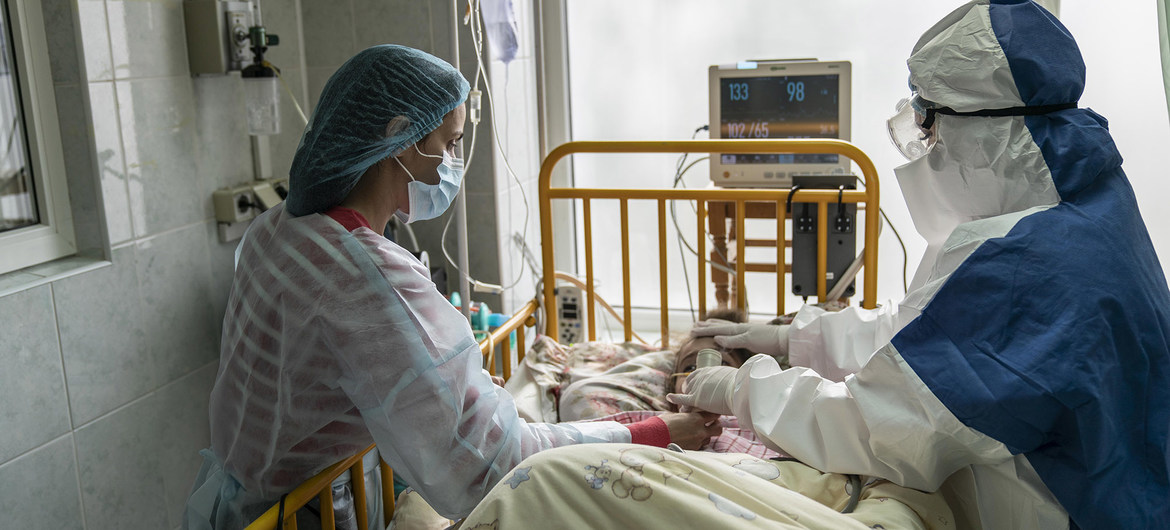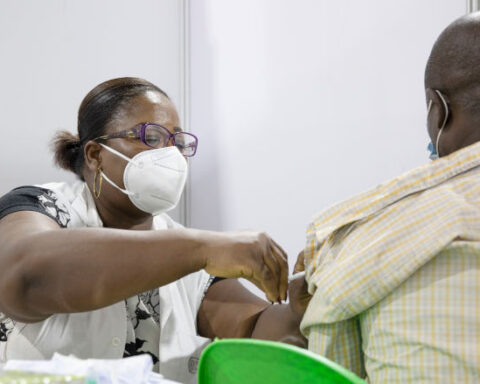“We know that this post-COVID-19 condition – or as some patients also call it ‘long COVID’ and some clinicians call it ‘long COVID’ – is a heterogenous group of symptoms that occur after the acute illness”, said Dr. Janet Diaz, Team Lead, Health Care Readiness at WHO.
“So, these are symptoms or complications that can happen potentially a month after, three months after, or even six months after, and as we are learning more, we are trying to understand the real duration of this condition.”
Mental and physical ills are ‘real’
Citing reported symptoms such as neurological and physical illness, Dr. Diaz noted that an unspecified number of sufferers had been unable to return to work, once they had recovered from the acute sickness caused by the new coronavirus.
“We are concerned obviously with the numbers of patients infected with SARS-CoV-2 virus that the numbers…just by the magnitude of the pandemic, will impact health systems.”
Although comprehensive data on the condition is not yet available, the WHO official insisted that “these (symptoms) were real”.
“Some of the “more common” ailments were “fatigue, exhaustion and post-exertional malaise, cognitive disfunction”, along with what some patients called “brain fog”, Dr Diaz said, describing a “constellation of symptoms”.
Complications
Further research is also needed to drill down into how many COVID-19 sufferers who did not require intensive care unit (ICU) treatment still went on to develop the condition.
“What we know this far is that patients experiencing (a) post-COVID-19 condition could have been hospitalized patients, those in the ICU. So, we do know that has happened in patients who are very sick, but also in patients who were not managed inside the hospital…they have had complications and they have had persistent symptoms or new symptoms…or symptoms that waxed and waned, that came and went after their acute illness.”
To promote a better understanding of post-COVID sickness and support patient care and public health interventions, the WHO has called on clinicians and patients to report data on symptoms to the Organization’s Clinical Platform.
The case report form – which is available in multiple languages – has been designed to report standardized clinical data from individuals after they have left hospital or after recovering from acute illness.
“What we don’t know is why it’s happening, so what is the pathophysiology … of this condition…the researchers are really working hard to get to the answers of these questions,” Dr. Diaz said.
Vaccine deal inked
In a related development, UN Children’s Fund UNICEF announced on Friday a deal to distribute the Pfizer-BioNTech COVID-19 vaccine, potentially before the end of March.
The agreement is on behalf of the COVAX platform, primarily for developing nations, set up by the WHO, The Coalition for Epidemic Preparedness Innovations (CEPI) and GAVI, the Vaccine Alliance.
“This supply agreement allows UNICEF to procure up to 40 million doses that have been secured under the COVAX Facility’s Advance Purchase Agreement with Pfizer/BioNTech to be available throughout 2021”, the UN agency said in a statement.
Emergency use approved
The Pfizer-BioNTech jab was the first to receive WHO Emergency Use Listing (EUL) on 31 December 2020.
It requires ultra-cold chain storage facilities which UNICEF has secured with partners to support governments in their roll-out of a variety of COVID-19 vaccines, it said.
As of Friday 12 February 2021, WHO’s coronavirus tracker reported 107,252,265 confirmed cases of COVID-19, including 2,355,339 deaths.
Regionally, the Americas have seen most cases to date, with 47,814,602 infections, followed by Europe (36,132,951), South-East Asia (13,141,859), Eastern Mediterranean (5,951,021), Africa (2,694,171) and Western Pacific (1,516,916).






